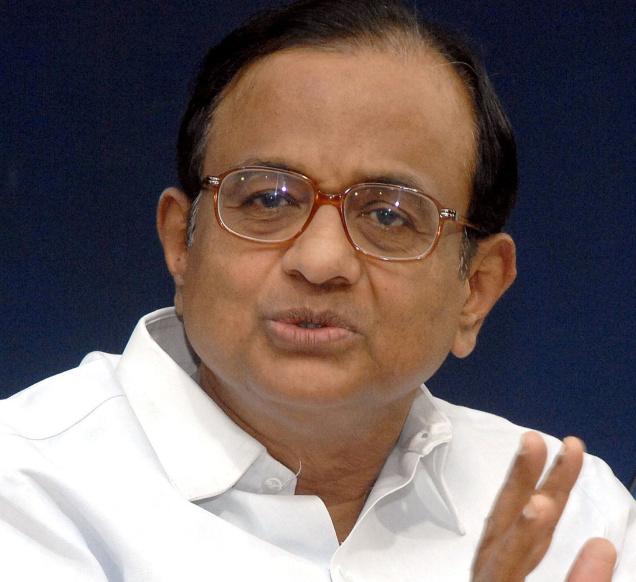Good analysis takes time.
It’s been three days since the finance minister Nirmala Sitharaman presented the annual budget of the union government and now my brain has really opened up and can see things that it couldn’t earlier.
On February 2, I wrote a piece which basically looked in detail at the fiscal deficit of 9.5% of the gross domestic product (GDP) and why the government’s claim of spending more this year and the next, to become the spender of the last resort and get the economy going again, didn’t really hold.
This piece is basically an extension of the same idea. Ideally, you should read the February 2 piece before you read this. Nevertheless, this piece is also complete on its own and if you are short on time, then just reading this piece should be enough to understand what I am trying to say.
One of the claims made by the finance minister in her budget speech was that the government was increasing the capital expenditure this year and the next. The mainstream media and the stock market wallahs have also tom tommed this line over the last few days. Nevertheless, as my analysis shows, this claim doesn’t really hold to the extent it is being made out to be.
As the finance minister said in her speech:
“In the BE 2020-21, we had provided Rs 4.12 lakh crores for capital expenditure. It was our effort that in spite of resource crunch we should spend more on capital and we are likely to end the year at around Rs 4.39 lakh crores which I have provided in the RE 2020-21. For 2021-22, I propose a sharp increase [emphasis added] in capital expenditure and thus have provided Rs 5.54 lakh crores which is 34.5% more than the BE of 2020-21.”
Let’s try and understand what the finance minister is saying here pointwise. (BE = budget estimate. RE = revised estimate. When the budget is presented a budget estimate is made. When the next budget is presented a revised estimate is put forward).
1) Capital expenditure is basically money spent on creating assets, in particular physical infrastructure like roads, railway lines, factories, ports, etc. Revenue expenditure is basically money spent in paying salaries and pensions, financing subsidies, etc. Over and above this, interest paid on the outstanding debt or borrowings of the government, is also a part of revenue expenditure. In fact, interest payments on outstanding debt are the biggest expenditure in the union budget. In 2020-21, it forms 20% of the total government expenditure and it jumps to 23.3% in 2021-22.
The usefulness of capital expenditure made by the government can be experienced in the years to come as well and it is believed that it adds to economic activity more than the revenue expenditure. Hence, economists, journalists and policy analysts, while analysing the union budget like to look at the money that has been allocated towards capital expenditure.
2) In 2019-20, the government spent Rs 3.36 lakh crore on capital expenditure. In 2020-21, it is expected to end up spending Rs 4.39 lakh crore, which is 30.7% more. But the thing to understand here is that when the government presented the budget for this financial year in February 2020, it had already budgeted to spend Rs 4.12 lakh crore or around 22.6% more.
It is worth remembering that when the budget for this financial year was presented, the fear of covid and the negative impact it would have on the economy, hadn’t been realised as yet. In the aftermath of covid, the capital expenditure went up from the budgeted Rs 4.12 lakh crore (or the budget estimate) to the revised estimate (RE) of Rs 4.39 lakh crore. Hence, the post covid increase in capital expenditure has been around 6.6%.
Given this, the increase in capital expenditure in 2020-21 had already been budgeted for pre-covid and there was a small increase post-covid. Once we know this, things don’t sound as exciting as the finance minister made it sound in her budget speech.
3) How will things look in 2021-22 when it comes to capital expenditure? The finance minister said that the capital expenditure will grow by 34.5% to Rs 5.54 lakh crore in 2021-22 in comparison to the budgeted expenditure of Rs 4.12 lakh crore in 2020-21.
The question is why would you compare next year’s budget estimate with the current year’s budget estimate when the revised estimate number for the year is already available. You would only do it, if you wanted to show a higher jump. Anyway, the finance minister of a country should be using some better mathematical tricks than such an elementary one.
Also, even when we compare next year’s budgeted capital expenditure with this year’s revised one, the jump is substantial. The capital expenditure will jump from Rs 4.39 lakh crore to Rs 5.54 lakh crore. This is a jump of 26.2%, which looks to be very good.

4) So far so good. The trouble is that the finance minister just spoke about the budgeted capital expenditure of the government in her budget speech and not the total capital expenditure of government. You can click on this and go to page 8 to get the numbers for the total capital expenditure of the government, which are also published in the budget.
The total capital expenditure of the government includes what is in the budget plus internal and extra budgeted resources (IEBR). The IEBR consists of money raised by the public sector enterprises owned by the union government through profits, loans as well as equity, for capital expenditure. It also includes the Indian Railways. This is also a part of government’s overall capital expenditure though it is off-budget and not a part of it.
The total capital expenditure of the government in 2019-20 stood at Rs 9,77,280 crore (It will soon become clear why I am using full numbers and not representing them in lakh crore). The revised estimate for the total capital expenditure in 2020-21 stood at Rs 10,84,651 crore, which is around 11% more. A 11% jump year on year sounds decent.
Nevertheless, one needs to take into account the fact that the budgeted capital expenditure of the union government when the budget for this year was presented in February 2020 had stood at Rs 10,84,748 crore.
As I said earlier, the budget was presented before covid struck. In that sense, the revised capital expenditure of 2020-21 is actually slightly lower than the budgeted one. This again punctures the government’s claim of spending more to get the economy going again post covid. They are spending a tad lower than what they had planned to spend before covid struck.
5) How does 2021-22 look? The government is planning to spend Rs 11,37,067 crore towards capital expenditure. This is 4.8% more than the current financial year. This when the government expects the nominal gross domestic product (GDP), not adjusted for inflation, to jump by 14.4% during 2021-22. The Economic Survey expects the nominal GDP to jump by 15.4%.
Once this is taken into account, it is safe to say that if the government sticks to these numbers, there will be barely any increase in capital expenditure between this year and the next.
Of course, the narrative of the government increasing its capital expenditure has been set. That’s what we have been told over and over again over the last few days. The stock market seems to believe it as well.
This entire exercise also tells you how nuanced numbers can get once you start really digging them up and setting them up in the right context. This is something you won’t see much in the mainstream media. Given this, it is very important that you please continue supporting my writing.
PS: I would like to thank, Sreejith Balasubramanian, Economist – Fund Management, IDFC AMC, whose research note on the budget, helped me think through this issue, in a much better way.



